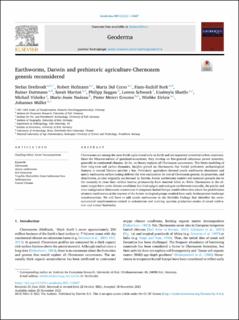| dc.contributor.author | Dreibrodt, Stefan | |
| dc.contributor.author | Hofmann, Robert | |
| dc.contributor.author | Dal Corso, Marta | |
| dc.contributor.author | Bork, Hans-Rudolf | |
| dc.contributor.author | Duttmann, Rainer | |
| dc.contributor.author | Martini, Sarah J. | |
| dc.contributor.author | Saggau, Philipp | |
| dc.contributor.author | Schwark, Lorenz | |
| dc.contributor.author | Shatilo, Liudmyla | |
| dc.contributor.author | Videiko, Michail | |
| dc.contributor.author | Nadeau, Marie-Josée | |
| dc.contributor.author | Grootes, Pieter Meiert | |
| dc.contributor.author | Kirleis, Wiebke | |
| dc.contributor.author | Müller, Johannes | |
| dc.date.accessioned | 2022-02-10T07:46:05Z | |
| dc.date.available | 2022-02-10T07:46:05Z | |
| dc.date.created | 2022-02-08T17:12:09Z | |
| dc.date.issued | 2021 | |
| dc.identifier.citation | Geoderma. 2021, 409, . | en_US |
| dc.identifier.issn | 0016-7061 | |
| dc.identifier.uri | https://hdl.handle.net/11250/2978117 | |
| dc.description.abstract | Chernozems are among the most fertile agricultural soils on Earth and are important terrestrial carbon reservoirs. Since the Miocene-advent of grassland-ecosystems, they develop on fine-grained calcareous parent materials, generally in continental climates. So far, no theory explains all Chernozem occurrences. This limits modeling of their long-term soil carbon dynamics. Insights gained on Chernozems that buried prehistoric archaeological features in central Ukraine provide a key. Prehistoric agriculture favored anecic earthworm abundance and anecic earthworm surface casting delivers the best explanation for coeval Chernozem genesis, its properties, and distribution, an idea originally put forward by Darwin. Anecic earthworms transfer soil material upwards due to the necessity to clear their vertical burrow permanently from material fallen in. While Chernozems in the climatic steppe form under climate conditions that limit epigeic and endogeic earthworms naturally, the patchy and time-transgressive Chernozem occurrences in temperate humid Europe would reflect sites where the proliferation of anecic earthworms at the expense of the former ecological groups resulted from early Anthropocene landscape transformations. We will have to add anecic earthworms to the Neolithic Package that identifies the socio-economical transformations related to sedentarism and evolving agrarian production modes of cereal cultivation and animal husbandry. | en_US |
| dc.language.iso | eng | en_US |
| dc.publisher | Elsevier Science | en_US |
| dc.rights | Navngivelse 4.0 Internasjonal | * |
| dc.rights.uri | http://creativecommons.org/licenses/by/4.0/deed.no | * |
| dc.title | Earthworms, Darwin and prehistoric agriculture-Chernozem genesis reconsidered | en_US |
| dc.type | Peer reviewed | en_US |
| dc.type | Journal article | en_US |
| dc.description.version | publishedVersion | en_US |
| dc.source.pagenumber | 14 | en_US |
| dc.source.volume | 409 | en_US |
| dc.source.journal | Geoderma | en_US |
| dc.identifier.doi | 10.1016/j.geoderma.2021.115607 | |
| dc.identifier.cristin | 1999183 | |
| dc.source.articlenumber | 115607 | en_US |
| cristin.ispublished | true | |
| cristin.fulltext | original | |
| cristin.qualitycode | 1 | |

